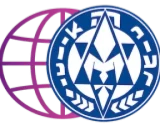Salo Harel, Mazkirut Olamit of Hanoar Hatzioni B’Israel
The fifteenth of Av is considered, in the modern Hebrew calendar, to be the
holiday of love and friendship. Hearts, flowers, gifts and dinners in luxurious
restaurants are among the ways in which this festival is celebrated today.
However, Tu B’Av started as a festival of redemption, of finding a new path
through reconciliation, forgiveness and mutual understanding, putting aside the
economic, social and regional stigmas in order to unite as a people.
There are several reasons why Tu B’Av is celebrated. According to Chazal1
, on Tu B’Av ended the decree of punishment that sentenced the generation who left
Egypt to wander in the desert for forty years. According to our sources, on this
date, all those who were involved in the tragic sin of the Golden Calf in Maamad
Har Sinai “ceased to die in the wilderness” (Talmud Yerushalmi, Taanit 4). In
addition, the Book of Judges (Shoftim), relates the war that broke out between the
Tribes of Israel and the Tribe of Benjamin. As a part of this war, the eleven tribes
decided not to marry members of the Tribe of Benjamin, thus condemning it to
potential extermination. In Tu B’Av, however, the Tribes of Israel declared the
cancellation of this prohibition, thus allowing the continuity of Shevet Binyamin
(Judges 21: 15-24). Likewise, Tu B’Av was the day that the sons of the different
tribes were allowed to intermarry, without risking losing part of the land they
received from Moshe before entering the Land of Israel (Numbers [Bamidbar], 36:
6-7). This, in fact, is the main reason why Tu B’Av has been associated over the
years with Valentine’s Day. It is worth mentioning that the month of Av is
associated with the start of the grape harvest. Therefore, the vineyards were
chosen as the place for celebration for Am Israel, and served, on many occasions,
as a prime location for couples to form – a fact that reinforced this date as “The
Holiday of Love”.
There are two main elements to this day, as we have seen in the previous
examples: on the one hand, love as a central value, and on the other hand, the
Jewish People’s continuity as a primary goal.
I believe that these two elements are precisely what makes this festival so “ours” in
terms of the tnua. Our mission as educators in general and as madrichim of Hanoar
Hatzioni, in particular, is to focus our efforts on the strengthening and continuity
of our people.
This is the goal we aspire to accomplish each Saturday in our weekly encounters,
in every peula and in every machane. But for this to happen, we cannot allow our
people to continue being divided.
Unfortunately, many forces are trying to separate, exclude, differentiate and
alienate those of us who form a part of Am Israel. Therefore, we must educate
towards union, reconciliation and love, just like the ones who preceded us have
done throughout history in Tu B’av. However, achieving this objective takes much
more than words; it takes actions. This is why I believe it is essential to educate
and encourage our chaverim to form a broad, pluralist conception, which will not
only allow them to have respect for others but will mainly enable them to shake
off any preconceptions or stigmas that prevent the unification of the Jewish people
as a nation.
1 Chazal: Hachameinu Zichram Libracha are the Jewish sages during the times of the Talmud and the
Mishna, from the time of the Second Temple (235 BCE) to the year 635 CE.










